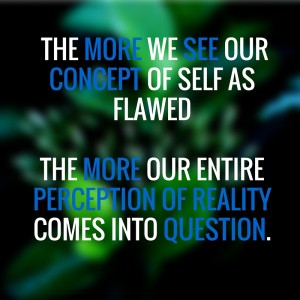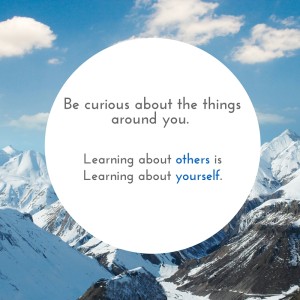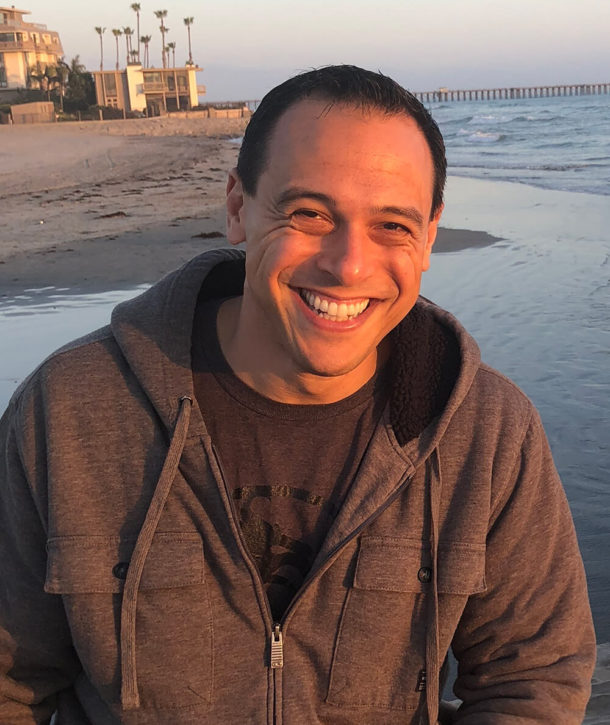I’ve spent a lot of time trying to figure out who I really am. As a philosophy major in college, I engaged in esoteric discussions about the nature of identity, meaning, and reality. Lately, my thinking has been on a far more personal and practical level. How should I live my life? What do I care about? How can I take my knowledge and translate it into a life worth living? Here is how I approach these questions.
The Nature of Self
We are born into this world with no sense of self and other. We craft our identity by making connections throughout our childhood and continue to develop and modify that sense as an adult. Identity is a notoriously difficult concept to pin down, in large part because it is a mental construct, a metaphor, that our brains create to give us an evolutionary advantage in protecting and propagating the “self.”
The majority of our sense of identity is formed before we have any conscious control over our lives. The paradigms we adopt through basic experimentation and reaction to the world (mostly with our parents) build up the self-construct. That self-construct then becomes the structure through which we develop conscious awareness. The more the conscious mind investigates the nature of identity and the self, the more flimsy the concept appears. The more we see our concept of self as flawed, the more our entire perception of reality comes into question.

This healthy skepticism is often the beginning of a personal spiritual quest. You can seek enlightenment through many means, but they all point to the same basic principle- a perception of the world as a unified whole (often described as god, “the fundamental ground of being” or “pure awareness”). Understanding this principle intellectually is a worthy challenge, but the true power of this realization comes from “feeling” its truth. When you realize that you are connected fundamentally to all other things and that the ego identity that you work so hard to protect is an illusion, all of the fears, insecurities, and confusions of life fade into the background. Finding this feeling is a personal journey, but tools such as meditation, prayer, and psychedelics can all help cultivate it.
The Practice of Self-Discovery
But once one has seen the spiritual mountaintop and returned, a new journey must begin for all who wish to still connect and be a part of the world. While it is wonderful to periodically return to the sense of oneness, we cannot live as a universally connected consciousness without a sense of self.
The sense of self is the thing that drives our social behavior and many of our survival instincts. Moreover, full immersion in the struggles of the self (love/loss, fear/relief, success/failure, etc.) is the stuff that makes life vibrant and engaging. Unless you plan to live as a celibate monk on a mountaintop, you will still need a well-developed self to live a full life. So how do we reconcile the project of the self with the drive for enlightenment?
I believe this is fundamentally the process of self-discovery. Finding the value in the constructed-self involves both becoming more aware of its hidden contours and features, as well as letting it be molded and shaped by a fundamental awareness of the connectedness of things.
This approach allows us to take seriously the projects of life- self improvement, career, relationships, etc. while still being “in on the joke” about the fundamental ground of being (that the self is illusory). A good metaphor for this is watching a movie. On one level, you know that the movie isn’t real, but you can still lose yourself in the story to fully experience all the trials and tribulations of the hero. Be the hero in the story of your life, but don’t forget that its just a story.
Mirrors for the Self
The self is the lens through which we view the world. Much like it is difficult to look at your own eyes without a mirror, it is also difficult to look at the self directly. We must find tools that can serve as mirrors to the self. Unfortunately, the only mirror that can reflect a “self” is a self in another form. This means that all mirrors we use are in some sense distorted (like looking at your reflection in a funhouse mirror). We must, therefore, look for patterns in the mirrors available to us to try and find the reality behind the images. Here are the four tools I’ve found most helpful for this purpose.
1. Other people (other selves)
Surround yourself with people who you admire and be open with them. See how they interact with you and encourage them to give you honest feedback on your character. This requires a willingness to be vulnerable and to listen to things you may not want to hear. It is far easier to see the flaws and unconscious traits in others than in yourself. Turn this feature of human nature to your advantage and let others help you investigate your own nature. Be open and compassionate when both giving and receiving feedback.
2. Journaling and Note Taking (our own self over time)
When immersed in the drama of day to day life, we typically perceive our reactions as being merely responses to the outside world. Writing down your thoughts and perceptions allows you to review them over time and notice patterns in your behavior. Any feeling or event that regularly occurs in your life is a reflection of your personal nature. Investigating those patterns will lead to a better understanding of the self.
3. Quiet, Sustained Attention (deeper levels of our current self)
We don’t often set aside time to just be with ourselves. Even when alone, we distract ourselves with television, video games, and social media. Taking the time to sit with your own feelings and emotions can yield enormous benefit. This doesn’t have to be a formal meditation process. Just take a few minutes whenever you can and adopt an attitude of compassionate curiosity. Pay attention to your own thoughts and feelings. When a strong thought or feeling arises, ask yourself “What is this about?” Be specific in your answer: look at physical sensations, past experiences that connect to the present feeling, etc. Most importantly, pay attention to the desire to run away or distract yourself from something unpleasant in your own mind. Instead of becoming lost in the movie of your life, try to think like a director or a writer while watching the film- what broader story does this event serve? Does this match the story I want to tell?
4. Study and Stories (finding patterns in the experience of many selves)
We live in an era where we have far more than ourselves and our friends to help us learn. Stories fundamentally illustrate the journey of the self (e.g. the Hero’s Journey) and can help us see our selves in the context of all humanity. Expose yourself to as many stories as possible (both fiction and non-fiction) to see how the lives of countless others can illuminate your own.
In addition to stories, research into human nature is incredibly valuable. Understanding the evolutionary drivers that condition our behavior and thinking can help us understand ourselves better. Knowing, for example, that people will obey authority figures even against their own best judgment can help you to pause and look at where in your own life you cede your authority to others. Be curious about the things around you. Learning about others is learning about yourself.

The process of self-discovery is a life-long one. There is no “done” to self discovery, just like there is no “done” to physical fitness. It takes hard work and perseverance to reveal the layers of the self and to help it align with the fundamental ground of being. But that hard work yields the most powerful reward imaginable- a fulfilling and meaningful life.


